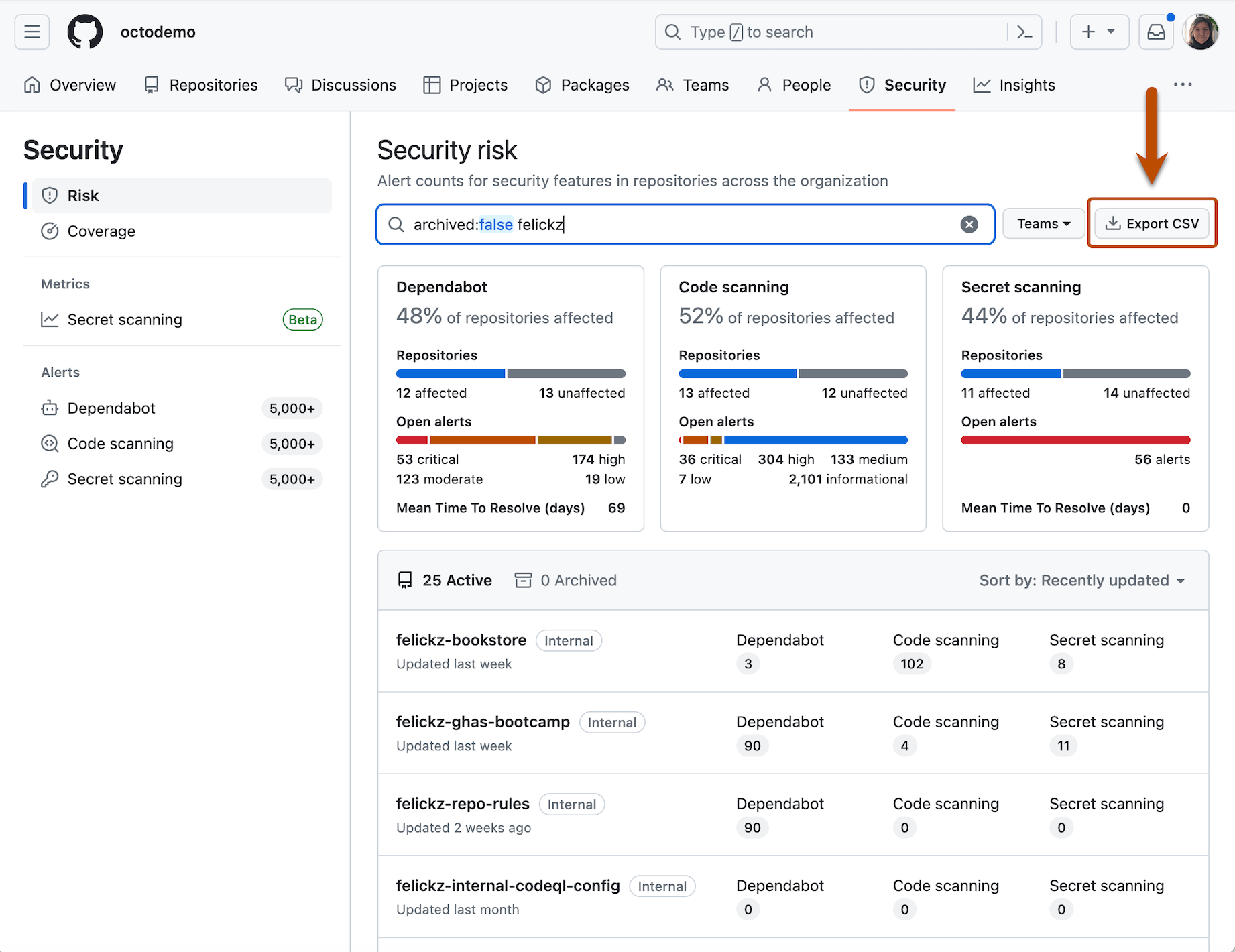Gain valuable insights and effectively monitor your enterprise’s security landscape and progress with two new enterprise-level pages: the security overview dashboard and secret scanning metrics.
Key features
- Customizable filters: Select specific time periods and focus areas such as security tool, team, or custom repository property.
- Comprehensive data: Trending and snapshot data provide a robust security landscape overview.
- Detailed metrics: Includes metrics such as the average age of security alerts, mean time to remediate, and push protection statistics.
To access these new enterprise-level views, navigate to your enterprise account. In the enterprise account sidebar, click Code Security. The new pages are accessible to organization owners and organization security managers, with data scoped to the repositories and alerts you have access to.
These two pages are now available as a public beta on GitHub Enterprise Cloud and will be available in GitHub Enterprise Server 3.14.
Learn more about security overview, managing code security for your enterprise, and send us your feedback
Questions or suggestions? Join the conversation in the community discussion.











